UPSC Daily Current Affairs: 4th October 2024 | Current Affairs & Hindu Analysis: Daily, Weekly & Monthly PDF Download
GS1/Indian Society
Classical Language
Source: Times of India
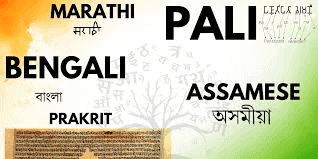
Why in News?
Recently, the Union Cabinet chaired by the Prime Minister of India has approved to confer the status of Classical Language to Marathi, Pali, Prakrit, Assamese, and Bengali languages.
Classical Language Status Criteria:
- The designation of a language as classical is determined by criteria set forth by a Linguistic Experts Committee.
- To qualify as a classical language, the language must meet the following revised standards:
- It must have a significant historical background, with early texts or recorded history spanning 1500 to 2000 years.
- There should be a substantial body of ancient literature or texts that are regarded as cultural heritage by generations of its speakers.
- There must be knowledge texts that include prose alongside poetry, as well as epigraphical and inscriptional evidence.
- The classical form of the language and its literature can differ from its contemporary version or may be distinct from later variations of its derivatives.
Other Recognised Classical Languages:
- Tamil (2004)
- Sanskrit (2005)
- Telugu (2008)
- Kannada (2008)
- Malayalam (2013)
- Odia (2014)
Benefits of Classical Language Status
Once a language receives the classical status, the Ministry of Education offers various advantages to promote it, including:
- Two prestigious international awards presented annually to distinguished scholars in the language.
- The establishment of a Centre of Excellence for Studies in the Classical Language.
- A request to the University Grants Commission (UGC) to create Professional Chairs in Central Universities that are dedicated to the classical language.
GS2/International Relations
China-Vietnam red diplomacy
Source: The Hindu
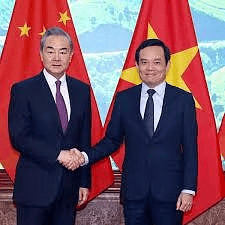
Why in News?
The recent visit of the Vietnamese President aims to revive the historical bonds and camaraderie established between Mao Zedong and Ho Chi Minh, thereby strengthening strategic political trust in their bilateral relationship.
- Current Diplomatic Relationship between China and Vietnam:
- Revived Political Trust: The Vietnamese President's visit to China was focused on rekindling the historical comradeship between Mao Zedong and Ho Chi Minh, with the intent to enhance political trust and strengthen the comprehensive strategic cooperative partnership between both communist nations.
- Joint Statement on Cooperation: Both nations reiterated their commitment to promoting socialism and expressed their desire to develop a "Vietnam-China community with a shared future."
- Economic and Strategic Agreements: The visit yielded 14 agreements across various sectors including connectivity, infrastructure, healthcare, and media. Trade between China and Vietnam remains strong, with China being Vietnam's largest import source and a major investor; bilateral trade reached $171.9 billion in 2023.
- How do recent events reflect the complexities of Vietnam’s foreign policy towards China?
- Bamboo Diplomacy: Known as "Bamboo Diplomacy," Vietnam's foreign policy emphasizes flexibility and resilience. It seeks to maintain strong relations with multiple global powers, including China, while also strategically engaging with the U.S., India, Russia, and Japan to counterbalance Chinese influence.
- Economic Dependence vs. Strategic Hedging: Vietnam's increasing economic interdependence with China, evident in trade and investments, contrasts with its efforts to mitigate over-reliance by strengthening ties with other global partners. This balancing act highlights Vietnam's pragmatic foreign policy approach.
- Challenges Vietnam Faces in Maintaining Sovereignty Amid Growing Chinese Influence:
- Territorial Disputes: The ongoing territorial disputes over the Paracel Islands in the South China Sea present significant challenges for Vietnam.
- Economic Challenges: Although Vietnam benefits from its economic ties with China, the rising trade deficit and increasing Chinese investments create a dependency that may impede Vietnam’s autonomy in key decision-making areas, particularly concerning infrastructure and connectivity.
- Strategic Hedging and Sovereignty: Vietnam is actively pursuing strategies to hedge against Chinese influence by forming alliances with the U.S., Japan, and India.
- Way forward:
- Enhance Bilateral Engagement: India is encouraged to further deepen its strategic partnership with Vietnam through increased economic collaboration, cultural exchanges, and joint defense initiatives.
- Support Regional Multilateralism: India should take an active role in regional forums and initiatives that foster multilateral cooperation, such as the Quad and ASEAN-led dialogues.
GS3/Environment
Bihar under water - Why the state sees floods every year
Source: Indian Express
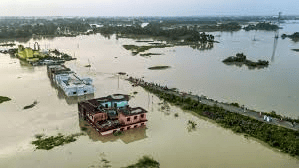
Why in news?
Bihar is once again facing severe floods, impacting 11.84 lakh residents who have been displaced, relying on air-dropped food packets and makeshift shelters, and are at risk of waterborne diseases. Every year, North Bihar encounters severe flooding, with countless individuals suffering as their crops and livestock are destroyed. Despite ongoing reconstruction efforts, the region finds itself trapped in a cycle of devastation.
Vulnerability
- Bihar is the most flood-prone state in India, with 76% of the northern population constantly facing the risk of flooding.
- The state is traversed by both snow-fed and rain-fed rivers, increasing the likelihood of various types of floods.
Four distinct types of floods
- Flash floods: Caused by rainfall in Nepal, these floods have a short lead time of around 8 hours and the water recedes quickly.
- River floods: Typically occur due to overflowing rivers, with a lead time of about 24 hours and floodwaters taking a week or longer to recede.
- Drainage congestion floods: Happen at river confluences, taking over 24 hours to develop and often lasting the entire monsoon season, which is about three months for the water to recede.
- Permanently waterlogged areas: Certain regions remain waterlogged throughout the year.
Causes of the first three types of floods
- A significant factor for the first three flooding types is Bihar's geographical position below Nepal, where numerous Himalayan rivers flow into the state.
- The Himalayas, being a young mountain range, have loose soil, resulting in rivers like Kosi, Gandak, Burhi Gandak, Bagmati, Kamla Balan, Mahananda, and Adhwara becoming sediment-laden.
- As rainfall increases water volume, these rivers tend to overflow their banks rapidly.
Reasons for permanent waterlogging
- Waterlogging is caused by several factors, including:
- Spilling of silted small rivers.
- Encroachment on drainage channels.
- Waterlogging induced by embankments.
- The existence of saucer-shaped depressions locally known as Chaurs, formed by the shifting course of rivers and sediment deposition.
Kosi challenge
- Bihar's geographic features make annual floods unavoidable, particularly due to the Kosi River, often referred to as the "sorrow of Bihar."
- In the 1950s, embankments were built along the Kosi to control its flow, initially perceived as a lasting solution.
- However, these embankments have frequently failed, creating new challenges.
- By constricting the river's path, the embankments have trapped sediments, leading to a rise in the riverbed of approximately 5 inches each year.
- This elevation makes the Kosi more susceptible to overflowing, exacerbating the flooding crisis in the area.
Flood in 2024
- This year's floods were triggered by heavy rainfall and floods in Nepal, as well as the release of water from the Kosi River barrage.
- The current flooding in Bihar is unprecedented due to the discharge of 6.6 lakh cusecs from the Birpur barrage on the Kosi River in Nepal, marking the highest release in nearly sixty years.
- In India, embankments failed at seven locations across four districts, despite their design to manage 9.5 lakh cusecs.
- These breaches are attributed to the river becoming shallower.
- Approximately 380 villages, housing 15 lakh individuals, are trapped within the embankments, facing recurring floods with no means of escape.
Economic implications
- While the floods in Bihar do not always lead to significant loss of life, the economic repercussions are profound.
- Destruction of crops, livestock, and infrastructure is substantial, and the resulting distress migration worsens the economic situation in the state.
- The government allocates around Rs 1,000 crore annually for flood relief and management.
Possible solutions
- For many years, the construction of a dam on the Kosi River has been suggested as a potential flood mitigation strategy, but it necessitates cooperation from Nepal, which has delayed progress.
- Recently, the Bihar government has proposed building an additional barrage on the Kosi and exploring the construction of barrages on rivers like the Gandak and Bagmati.
- However, the frequent breaches of existing embankments indicate that engineering solutions alone may not be adequate.
- Experts stress the importance of both structural and non-structural solutions, where non-structural approaches encompass legislation, risk reduction, early warning systems, and flood preparedness.
- The Flood Atlas of Bihar advocates prioritizing risk minimization and damage reduction rather than solely relying on structural methods along dynamic rivers such as the Kosi.
GS3/Environment
Pygmy hog
Source: The Hindu

Why in News?
Recently, nine captive-bred pygmy hogs were released in western Assam’s Manas National Park.
About
- Pygmy hog is recognized as the smallest and rarest species of wild pig globally.
- This unique mammal is notable for its ability to construct its own habitat, complete with a 'roof' for shelter.
- It serves as an indicator species, meaning its presence signifies the overall health of its primary environment, particularly tall and wet grasslands.
Habitat
- Pygmy hogs thrive in undisturbed grassland areas, which are typically dominated by early-succession riverine vegetation.
- Their preferred habitats consist of dense tall grass interspersed with a diverse range of herbs, shrubs, and young trees.
- The only viable population of pygmy hogs in the wild can currently be found in the Manas Tiger Reserve located in Assam.
Conservation status
- IUCN status: Critically Endangered.
- According to the Wildlife Protection Act of 1972, they are classified under Schedule I, indicating the highest level of protection.
Key facts about Manas National Park
- Manas National Park is situated in Assam and shares a border with the Royal Manas National Park in Bhutan.
- This park is designated as a UNESCO Natural World Heritage site.
- It also functions as a Project Tiger reserve, an elephant reserve, and a biosphere reserve.
- The Manas River flows through the park, contributing to its rich biodiversity.
- The park encompasses some of the largest remaining grassland habitats within the sub-Himalayan grassland ecosystems.
- Manas National Park is known for its rare and endangered wildlife, including species like the Assam roofed turtle, hispid hare, golden langur, and of course, the pygmy hog.
GS2/Governance
Criminalising Marital Rape in India
Source: BBC

Why in News?
The central government has opposed the criminalisation of marital rape in the Supreme Court, stating that the issue requires a "comprehensive approach" instead of a "strict legal approach".
Evolution of Section 375 of the IPC:
- The Indian Penal Code (IPC) defines acts that constitute rape by a man.
- This provision includes two exceptions:
- It decriminalises marital rape.
- It states that medical procedures or interventions do not constitute rape.
- The IPC was enacted in India during British colonial rule in 1860.
- Initially, the marital rape exception applied to women over ten years old; this age was increased to fifteen in 1940.
- In October 2017, the Supreme Court ruled that sexual intercourse by a man with his wife under the age of eighteen is considered rape, setting the age of consent at eighteen.
History of Marital Rape Law in India:
- The Domestic Violence Act of 2005 alludes to marital rape through provisions against any form of sexual abuse in a marriage or live-in relationship.
- This Act only provides civil remedies, leaving no option for marital rape victims to initiate criminal proceedings against their abusers.
- The Law Commission of India’s 172nd report in 2000 rejected the proposal to remove the marital rape exception while reviewing sexual violence laws.
Issues with Exception to Marital Rape:
- The marital rape exception creates a legal fiction where, despite all other requirements for rape being met, it is not considered rape if the parties are married.
- This exception is harmful and discriminatory towards women, as it is arbitrary.
- For instance, if sexual assault occurs just before marriage, it is classified as rape; however, if it occurs just after marriage, it is not.
- Assault is considered rape in live-in relationships or other intimate relationships, yet marriage provides immunity under Section 375 of the IPC.
- This exception denies married women the legal protections available to others.
Arguments against Criminalising Marital Rape:
- Concerns about misuse of the law are a primary reason for opposition to criminalising marital rape.
- Statistics from dowry-related Section 498A show significant instances of misuse, with 1,11,549 cases filed in 2020; 5,520 were closed as false.
- Out of 18,967 cases tried in courts, 14,340 resulted in acquittals while 3,425 led to convictions.
- The backlog of 498A cases at the end of 2020 was 651,404, reflecting a pendency rate of 96.2%.
- The burden of proof in marital rape cases is complex, as sexual intercourse is a normal aspect of marriage.
- Questions arise regarding who bears the burden of proof and what that burden entails if marital rape is criminalised.
- Discussions about making the definition of 'rape' gender-neutral are common, including in the context of marital rape.
- If exceptions in IPC Section 375 are removed or criminal provisions added to the Domestic Violence Act, husbands may not be able to utilize those provisions.
How is Marital Rape Treated Around the World?
- According to Amnesty International, 77 out of 185 countries (42%) have laws criminalising marital rape.
- Countries such as Australia (1981), Canada (1983), South Africa (1993), and the USA (1993) have enacted such laws.
- In many nations, marital rape is either not addressed or explicitly excluded from rape laws.
- The United Nations has urged countries to eliminate marital rape by closing legal loopholes, emphasizing that “the home is one of the most dangerous places for women.”
News Summary:
- The Central Government argues that the issue needs a comprehensive socio-legal approach rather than strict legal enforcement.
- The government has expressed concerns that criminalising marital rape could significantly disrupt the institution of marriage.
Key Points from the Government’s Arguments:
- Far-Reaching Implications:
- The government claims that categorising sexual acts between spouses as "rape" could severely impact marital relationships.
- Parliamentary Decision:
- The Centre informed the court that Parliament had decided to retain Exception 2 to Section 375 of the IPC, exempting marital rape from criminal classification during the 2013 amendments.
- Separate Legal Provisions for Consent within Marriage:
- While acknowledging that a husband's violation of his wife's consent is unacceptable, the government argues that the repercussions within marriage should differ from those outside of it.
- Concerns over Judicial Interference:
- The Centre urged the Supreme Court not to intervene in Parliament’s decision to maintain the marital rape exception, citing the socio-legal context of marriage in India.
- Disproportionate Punishment:
- The government suggested that labelling marital sexual acts as "rape" could be unduly harsh and disproportionate within the marital context.
- Supreme Court's Previous Ruling:
- In 2022, the Supreme Court acknowledged marital rape concerning the Medical Termination of Pregnancy (MTP) Act, allowing women to seek abortions for pregnancies resulting from marital rape.
- However, the Centre's current position indicates a distinction between this ruling and the broader criminalisation of marital rape.
GS3/Economy
Cabinet approves PM Rashtriya Krishi Vikas Yojana (PM-RKVY) and Krishonnati Yojana (KY)
Source: Economic Times

Why in News?
The Union Cabinet has sanctioned the restructuring of all Centrally Sponsored Schemes (CSS) managed by the Ministry of Agriculture and Farmers Welfare, consolidating them into two main umbrella schemes: Pradhan Mantri Rashtriya Krishi Vikas Yojana (PM-RKVY) and Krishonnati Yojana (KY).
Pradhan Mantri Rashtriya Krishi Vikas Yojana (PM-RKVY)
- Designed as a cafeteria scheme that encourages sustainable agricultural practices.
- Aims to enhance food security and promote agricultural self-sufficiency.
About PM-RKVY
- Objective: To foster sustainable agriculture and boost agricultural productivity.
- Total Proposed Expenditure: Rs 1,01,321.61 crore (including Krishonnati Yojana).
- Central Share (DA&FW): Rs 57,074.72 crore allocated for PM-RKVY.
Key Initiatives under PM-RKVY
- Soil Health Management
- Rainfed Area Development
- Agro Forestry
- Paramparagat Krishi Vikas Yojana
- Agricultural Mechanization (including Crop Residue Management)
- Per Drop More Crop
- Crop Diversification Programme
- RKVY DPR Component
- Accelerator Fund for Agri Startups
Key Focus Areas
- Sustainable agricultural practices
- Soil health and water conservation
- Crop diversification
- Organic farming
- Agricultural mechanization
Flexibility for States
- States will have increased freedom to redistribute funds based on their specific requirements.
Implementation Method
- Funds will be allocated to states, which will create Comprehensive Strategic Documents addressing aspects like crop production, climate resilience, and value chains.
Benefits
- Avoids duplication of efforts
- Ensures better convergence among schemes
- Streamlines the approval process, facilitating quicker implementation of Annual Action Plans (AAP).
Schemes Merged into Krishonnati Yojana (KY)
- National Food Security Mission (NFSM)
- National Mission on Oilseeds and Oil Palm (NMOOP)
- Mission for Integrated Development of Horticulture (MIDH)
- National Mission on Sustainable Agriculture (NMSA)
- Sub-Mission on Agricultural Mechanization (SMAM)
- National Mission on Agricultural Extension and Technology (NMAET)
- Mission Organic Value Chain Development for North Eastern Region (MOVCDNER)
GS3/Environment
International Energy Efficiency Hub
Source: Hindustan Times

Why in News?
Recently, the Union Cabinet chaired by the Prime Minister of India has approved India’s membership to the Energy Efficiency Hub.
About
- International Energy Efficiency Hub: It serves as a global platform aimed at enhancing collaboration and promoting energy efficiency across the globe.
- Established in 2020, it succeeded the International Partnership for Energy Efficiency Cooperation (IPEEC), where India was previously a member.
- The Hub unites governments, international organizations, and private sector stakeholders to exchange knowledge, share best practices, and develop innovative solutions.
Member countries:
- Currently, sixteen nations are part of the Hub, including Argentina, Australia, Brazil, Canada, China, Denmark, European Commission, France, Germany, Japan, Korea, Luxembourg, Russia, Saudi Arabia, United States, and United Kingdom.
Implementing agency:
- The Bureau of Energy Efficiency (BEE) has been appointed as the implementing agency for India’s involvement in the Hub.
- BEE will play a vital role in coordinating India’s participation in the Hub’s initiatives and ensuring alignment with national energy efficiency objectives.
Significance:
- India will benefit from access to a large network of experts and resources, which will bolster its domestic energy efficiency efforts.
- The nation will also contribute to global initiatives aimed at combating climate change by advancing energy-efficient technologies and practices.
- Participation in this global platform will facilitate a quicker transition to a low-carbon economy and enhance energy security.
- This action reinforces India's commitment to sustainable development and supports its goals of reducing greenhouse gas emissions.
GS2/Polity
Prison Reform in India
Source: Live Law
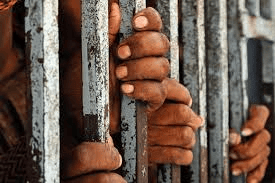
Why in News?
The Supreme Court issued a series of directives to the Centre and states to ensure that no inmate is subjected to work assignments or housing arrangements based on their caste. The SC declared this provision in various jail manuals “unconstitutional” for violating the inmates’ rights to dignity, equality, and non-discrimination. The ruling ended the long-standing practice of discrimination against prisoners based on caste and demanded prompt reforms in all states and UTs.
SC’s Verdict on Caste Bias, Segregation in Prisons:
Background:
- The court’s verdict arose from a petition by a journalist, urging the court to issue clear directions to overhaul all prison manuals and practices that reinforce caste hierarchies.
The court’s verdict:
- The verdict specifically addressed entrenched discriminatory practices against marginalized communities, including scheduled castes (SC), scheduled tribes (ST), and denotified tribes (DNTs) within India’s prisons.
- The apex court stated that treating inmates from DNTs as “habitual offenders” is oppressive to their fundamental human dignity and personality.
- The bench found that caste-based assignments of labor, such as assigning menial tasks (cleaning and sweeping) to marginalized castes while reserving cooking for higher castes, violates Articles 14 and 15 of the Constitution.
- The provision that food shall be cooked by a ‘suitable caste’ reflects notions of untouchability, prohibited under Article 17 of the Constitution.
- The SC expanded the scope of Article 21, stating that caste-based discrimination hinders personal growth and development.
- Furthermore, the court held that the selective assignment of menial jobs amounted to forced labor under Article 23.
- The judgment highlighted gaps in the Model Prison Manual of 2016 in addressing caste-based discrimination.
- It noted that the manual failed to eliminate caste-based segregation and labor division in prisons and criticized it for not incorporating the Prohibition of Employment as Manual Scavengers and their Rehabilitation Act 2013, which bans manual scavenging.
Court’s directives to Centre, states, and UTs:
- To combat caste-based prejudices, the bench called for strict adherence to guidelines laid down in Arnesh Kumar Vs State of Bihar (2014) and Amanatullah Khan Vs Commissioner of Police, Delhi (2024).
- The guidelines require police officers to ensure procedural safeguards for vulnerable communities, reinforcing the broader fight against systemic biases.
Issues Related to Prisons in India:
Fundamental rights of prisoners:
- Article 21 guarantees the right to life and personal liberty.
- Article 39A ensures free legal aid for those in need.
Key issues in Indian prisons:
Prison conditions in India face several critical challenges that impact inmates' rights and welfare, including:
- Overcrowding: Prisons in India operate at 117% capacity, largely due to a high number of under-trial prisoners. The SC emphasizes the right to speedy justice under Article 21 of the Constitution, but many cases remain unresolved.
- Unhygienic conditions: Many inmates lack access to proper medical facilities. Female prisoners often do not receive adequate sanitary products and basic health services.
- Custodial torture: Despite the 1986 DK Basu judgment prohibiting torture, reports of custodial violence continue, with increasing cases of custodial deaths.
- Delays in trials: Lengthy legal processes disrupt prison administration and prolong inmates' suffering. Although the right to a speedy trial has been recognized, it is often not upheld.
- Challenges for women prisoners: The number of female inmates is rising, but they often face inadequate facilities. There is also a lack of dedicated women’s prisons.
Prison Reforms - Recommendations of Committees, Provisions of Laws and Key Judgements:
- Justice Mulla committee 1983:
- Recommended improved prison accommodations.
- Proposed the creation of the Indian Prisons and Correctional Services.
- Advocated for public and media visits for transparency.
- Suggested the reduction of under-trial prisoners through expedited trials.
- Called for a national policy on prisons.
- Encouraged using alternatives to imprisonment, such as community service.
- Justice V.R. Krishna Iyer committee 1987:
- Recommended the induction of more women into the police force.
- Advocated for separate institutions with women employees for women offenders.
- Emphasized necessary provisions to restore the dignity of convicted women.
- Justice Amitav Roy panel (2018) of the SC:
- Recommended several prison reforms including special fast-track courts.
- Suggested improvements in the lawyer-prisoners ratio.
- Proposed the use of video-conferencing for trials.
- Provisions of the Model Prisoners Act of 2023:
- Legal aid to prisoners is the state’s duty, providing free legal aid through suitable legislation or schemes.
- Parole is a form of early release for inmates, contingent upon their adherence to behavioral conditions.
- Furlough allows prisoners to maintain family and social ties, which helps mitigate the negative effects of prolonged incarceration.
- Other provisions include special facilities for women and transgender prisoners and the use of technology in prison administration.
Key case laws:
- Hussainara Khatoon vs. Home Secretary (1979): Emphasizes the right to a speedy trial.
- State of Rajasthan vs. Balchand (1978): Establishes that bail is the rule, not jail.
GS2/Governance
PM Internship Scheme
Source: Money Control

Why in news?
Recently, the Prime Minister’s Internship Scheme was initiated, as announced by the Union Finance Minister during her Budget speech. This scheme is designed to enhance employability among the youth in India by providing them with practical experience in real-world business settings.
About PM Internship Scheme:
- The scheme aims to improve youth employability in India.
- It offers hands-on exposure to real business environments.
- This initiative represents a significant opportunity to close the skills gap and promote sustainable growth in the country.
Aim:
- The primary goal is to provide internship opportunities for one crore youths over a span of five years.
- Internships will be available at the top 500 companies.
- A pilot project will be carried out through an online platform managed by the Ministry of Corporate Affairs (MCA).
Stipend and Benefits:
- Interns will receive a monthly stipend of ₹4,500 funded by the central government through Direct Benefit Transfer (DBT).
- Additionally, companies will contribute an extra ₹500 through their Corporate Social Responsibility (CSR) initiatives.
- Upon joining, interns will also get a one-time grant of ₹6,000.
- They will be covered under PM Jeevan Jyoti Bima Yojana and PM Suraksha Bima Yojana for insurance.
Internship Duration:
- The internships will last for one year.
Eligibility Criteria:
- The scheme is open to candidates aged between 21 and 24 years who are not in full-time employment.
- Applicants must have completed at least class 10.
- Individuals from families with government jobs are not eligible to apply.
- Post-graduates are excluded from this internship opportunity.
- Candidates who have graduated from prestigious institutions like IIT, IIM, or IISER, and those holding CA or CMA qualifications are also ineligible.
- Anyone from a household with an annual income of ₹8 lakh or more in the financial year 2023-24 cannot apply.
Benefits of the Scheme:
- The program aims to provide valuable on-the-job training for youth.
- Participants will gain exposure to real-life work scenarios, enhancing their skills.
- The initiative will benefit industries by creating a pool of skilled, work-ready youth who can be employed in both large and small enterprises after their internships.
GS3/Science and Technology
Key Facts about Charon
Source: MSN

Why in news?
Recent scientific research has confirmed the presence of carbon dioxide and hydrogen peroxide gases on Charon, which is the largest moon of Pluto.
- Charon is the largest of Pluto’s five moons, measuring approximately half the size of Pluto itself.
- This moon was discovered on June 22, 1978, through telescopic observations by James W. Christy and Robert S. Harrington at the U.S. Naval Observatory located in Flagstaff, Arizona.
- Named after the mythological figure Charon, who ferries souls to the underworld in Greek mythology, this moon symbolizes the connection to its planetary counterpart, Pluto.
- Charon has a diameter of 754 miles (1,214 kilometers), whereas Pluto is about 1,400 miles wide.
- The mass of Charon is over one-tenth of Pluto’s mass, indicating a significant gravitational relationship between the two celestial bodies.
- Due to Charon's substantial mass in relation to Pluto, the two are often referred to as a double dwarf planet system, highlighting their close physical and gravitational interaction.
- The distance separating Charon from Pluto is approximately 12,200 miles (19,640 kilometers).
- Charon and Pluto exhibit a unique phenomenon known as mutual tidal locking, meaning that they always show the same faces to each other.
- This tidal locking results in Charon presenting the same hemisphere to Pluto at all times, as its rotation period matches its orbital period around Pluto.
- Charon's orbit around Pluto takes about 6.4 Earth days to complete.
GS3/Science and Technology
International Medical Device Regulators Forum
Source: ET Health World
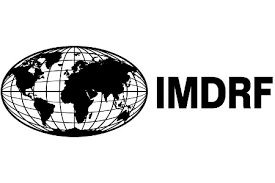 Why in news?
Why in news?
Recently, India has joined the International Medical Device Regulators Forum (IMDRF) as an affiliate member.
About
- International Medical Device Regulators Forum: The IMDRF was founded in 2011.
- Purpose: It is a collective of global medical device regulators aimed at accelerating the global adoption of regulatory harmonization and convergence for medical devices.
- Members: The forum includes regulatory authorities from several countries such as the U.S., Australia, Canada, the European Union, Japan, the United Kingdom, Brazil, Russia, China, South Korea, Singapore, and the World Health Organization (WHO).
- Benefits of Membership:
- Facilitates the harmonization of regulatory standards worldwide.
- Reduces the complexity faced by manufacturers in meeting diverse regulations.
- Enhances public health safety through collaborative efforts and regulatory alignment.
- Promotes innovation and ensures timely access to new medical devices for patients.
Significance to India
- India's participation in IMDRF Open Sessions will foster information exchange on technical topics with other regulatory bodies.
- This engagement will allow discussions on the latest strategies and trends in medical device regulation.
- India will provide insights regarding its regulatory experiences and perspectives.
- The collaboration is expected to fortify the Central Drugs Standard Control Organization (CDSCO)'s medical device regulation framework.
- It aims to address emerging technical challenges in a diverse landscape to protect public health and safety.
- India's involvement in the IMDRF is a step towards achieving international recognition for its medical device regulatory standards.
GS2/International Relations
How India could play a meaningful role in the conflict in West Asia
Source: Indian Express
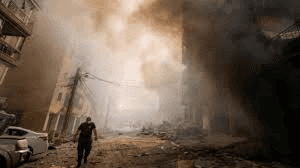
Why in News?
With growing tensions between Iran and Israel, the Ministry of External Affairs of India has stressed the importance of preventing further escalation in the region. It has urged all involved parties to engage in dialogue and diplomatic efforts to ensure stability.
Can India act as a mediator in the Iran-Israel conflict?
- India has established strong strategic and economic connections with both Israel and Iran, which enables it to serve as a communicator between the two nations. This balanced relationship positions India as a potential neutral mediator.
- India's rising global stature and its historical policy of non-alignment, coupled with its advocacy for peaceful dialogue, enhance its credibility as a mediator. However, it faces challenges in balancing its relationships with Israel, Iran, and significant Arab states.
What are India’s strategic interests in West Asia?
- Energy Security: West Asia is vital for India's energy requirements, accounting for approximately 80% of its oil imports. An escalation of conflict in this region could disrupt these essential supplies and lead to increased energy prices, significantly affecting India's economy.
- Economic Ties: India has invested significantly in its relationships with West Asian countries, considering the region as an extension of its neighborhood. This includes trade partnerships and investments, particularly with major Arab nations and Israel.
- Security Concerns: India shares common concerns with both Iran and Israel regarding terrorism, especially threats emerging from Pakistan and Afghanistan. This shared perspective may facilitate dialogue, but it also complicates India’s diplomatic positioning.
How does India’s relationship with regional powers influence its role?
- Regional Dynamics: Other influential regional players like Qatar, Egypt, Saudi Arabia, and Turkey also shape the situation. Qatar has actively mediated between conflicting parties, while Egypt’s geographical position near Gaza makes it a significant player in ceasefire discussions.
- Saudi Arabia's Influence: Saudi Arabia's leadership role in the Islamic world adds another layer of complexity to India’s diplomatic efforts.
- Multi-faceted Role: India maintains strong defense and economic relations with Israel while depending on Iran for energy supplies and having historical ties with various Arab nations. Balancing these relationships is crucial for India's foreign policy strategy.
Way forward:
- Diplomatic Engagement and Back-Channel Diplomacy: India can utilize its balanced relations to facilitate back-channel communication, focusing on de-escalation and humanitarian relief. Its non-aligned stance and growing global influence position it as a credible facilitator for peaceful dialogue.
- Multilateral Approach: India should engage through international forums like the United Nations and collaborate with other regional players such as Qatar, Egypt, and Saudi Arabia. This multilateral engagement would enhance India's role while minimizing the risks of taking sides in the ongoing conflict.
|
38 videos|5293 docs|1118 tests
|
















